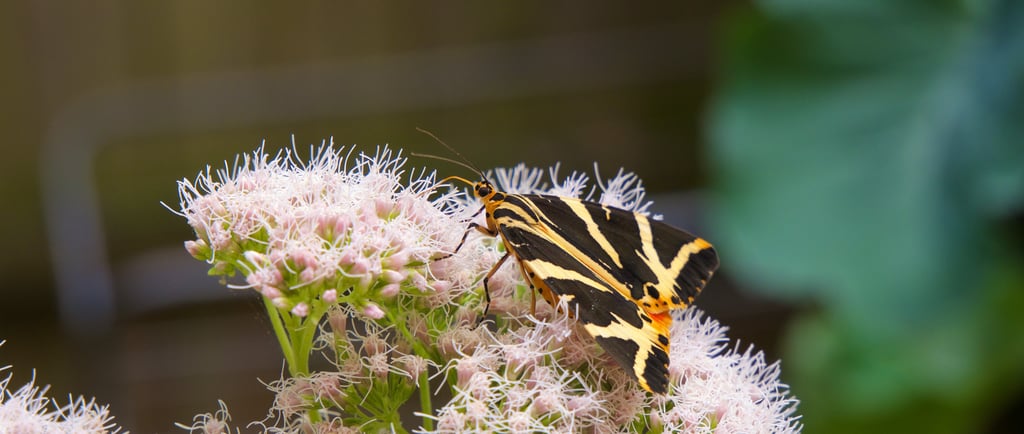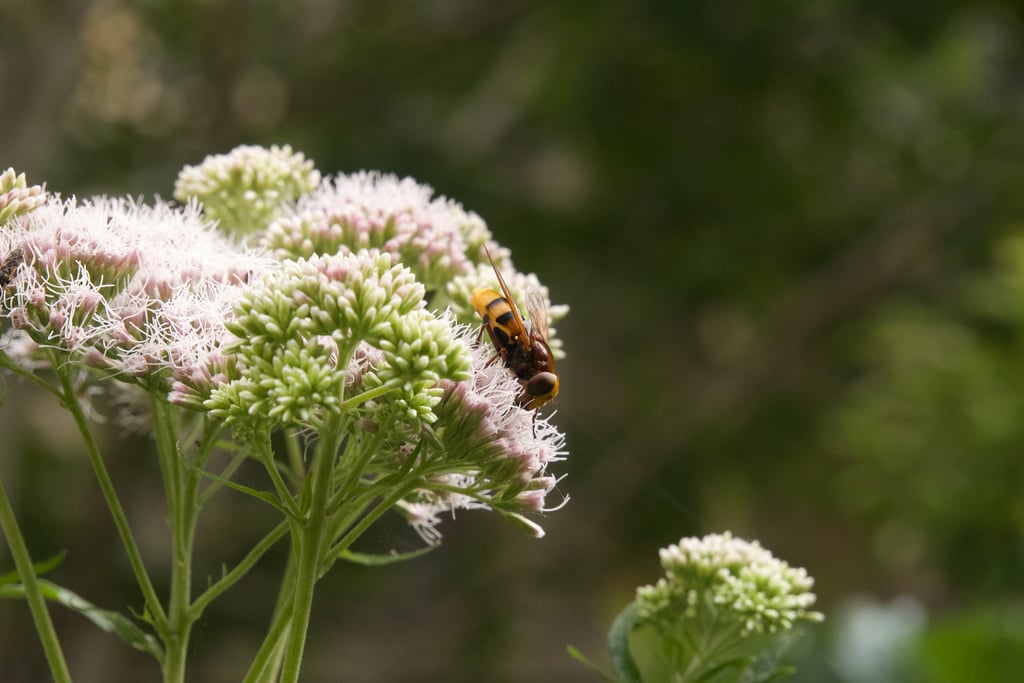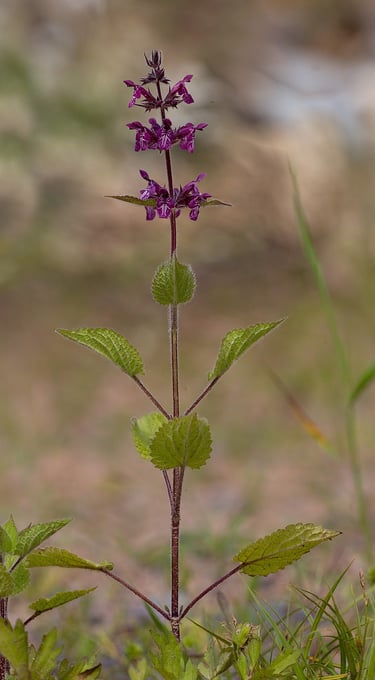Embracing chaos
Sometimes the most successful plants in the garden are not the ones you planted
WILDLIFEGARDEN DESIGNPLANT SPOTLIGHT
Bheinn
6/25/20254 min read


Some of the most successful plants in my garden are not ones that I have planted. These surprise 'volunteers' are known to everyone who spends time gardening and quite often they are a welcome addition. At this time of year, June, the most successful flowering plant in my fairly shady garden is hedge woundwort, Stachys sylvatica, a member of the mint or sage family Lamiaceae that appeared in my garden a few years ago after I dug up the lawn. These plants contain essential oils like much of the family but unfortunately this species has a rather unpleasant smell when rubbed that is somewhere between chocolate and musty old wardrobes. Initially I wanted to pull them out because of this but being curious I let them flower, and I'm glad I did. Stachys sylvatica forms tall spires of small burgundy mint-like flowers with an intricate white pattern on the petals that only the bees can decipher - and clearly it says something as the flowers are easily the most popular in the garden with bees at this time of year. These plants spread by seed but are also rhizomatous, which means they spread underground via runners, so within a few years of the first plant appearing I now have multiple spires of these attractive flowers rising up above my mint and Rudbeckia fulgida (also rhizomatous perennials).
Sometimes plants appear to colonise a space and then get shaded out and almost disappear. This happened in my garden with ox-eye daisy, Leucanthemum vulgare, one of the most mesmerising and in my view quintessential native flowers. A large clump formed under a redcurrant bush, flowering successfully and in profusion for a year or two, and then this year all that remained was one small stem after raspberries and the elder tree blocked out the sunlight. I transplanted it to a sunnier spot where it continues to flower, if much smaller than it initially was. Being a herbaceous perennial, this plant should return next year if it can establish in it's new spot.


Volucella zonaria, the hornet mimic hoverfly visiting the hemp agrimony


Aquilegia vulgaris


Leucanthemum vulgare, the oxe-eye daisy
Other plants that have appeared include a purple flowering Aquilegia vulgaris (pictured above) which always cheers us up in late spring (this was our first volunteer!) as well as the legumes red clover, white clover, black medick and yellow sweetclover. Despite my best efforts and hundreds of scattered seed, crimson clover and bird's foot trefoil have not taken in the garden - evidence that sometimes the plant you want is not exactly the plant you are going to get!
Another plant that was already in the garden when we moved in, and is very common in Bristol, is one of the local species of Geranium, specifically Geranium robertanium. This plant also has very musty, strong smelling foliage, but also has a very beautiful architectural shape and small pink flowers that bloom for a long time. In sun Robert's geranium turns red, but in shade the stems and leaves remain green and the flowers bloom nonetheless. One part of my garden gets no direct sun, and in my view G. robertanium is the perfect plant for that shaded spot.
New last year was the appearance of hemp agrimony or Eupatorium cannabinum, so called because of it's superficial resemblance to Cannabis. However this plant is not in the hemp family, it's in the daisy family Asteraceae. This tall herbaceous perennial grows quite freely around the city in clusters and is actually quite a spectacular plant, often with red stems and many small pink flowers forming umbels similar to yarrow. It is also one of the most popular native plant species with butterflies and moths, and this year has also attracted many pollinating insects including two species of Volucella, large hoverflies that lay their eggs in the nests of social bees and wasps, and the beautiful Jersey tiger moth (Euplagia quadripunctaria [pictured]), a relatively new species of day moth to Britain that is presently only found in the south of England. This species is the only butterfly or moth to have been designated a priority species under the European Union habitats directive and areas where it occurs can be declared special areas of conservation!


Stachys sylvatica or hedge woundwort Andreas Trepte CC BY-SA 2.5


Trifolium incarnatum, or red clover
Trefoil Garden Maintenance
Organic gardening services in Bristol and surrounds
Contact
Subscribe to my mailing list
+44 74 810 096 42
© Trefoil Garden Maintenance 2025. All rights reserved.
